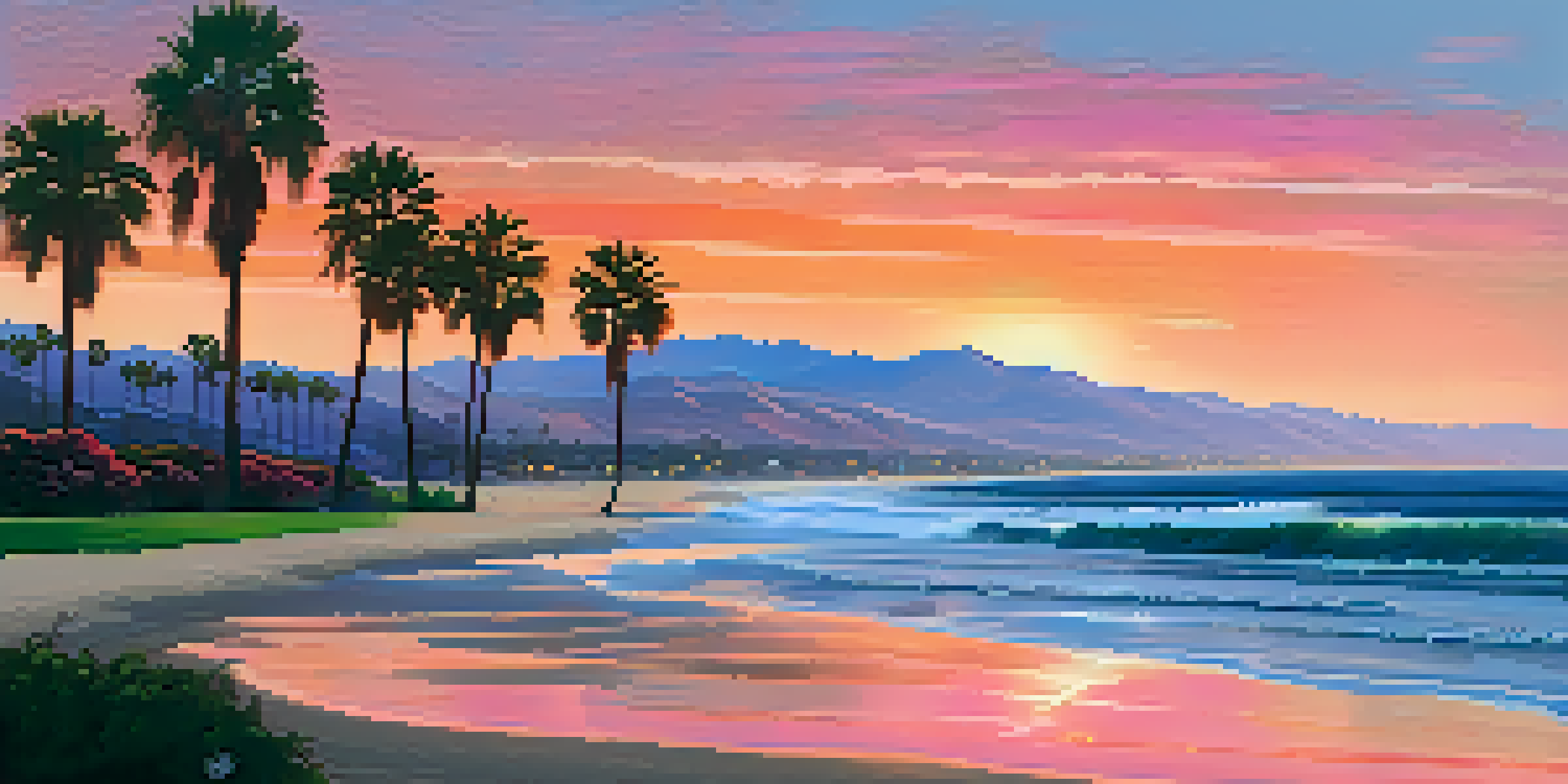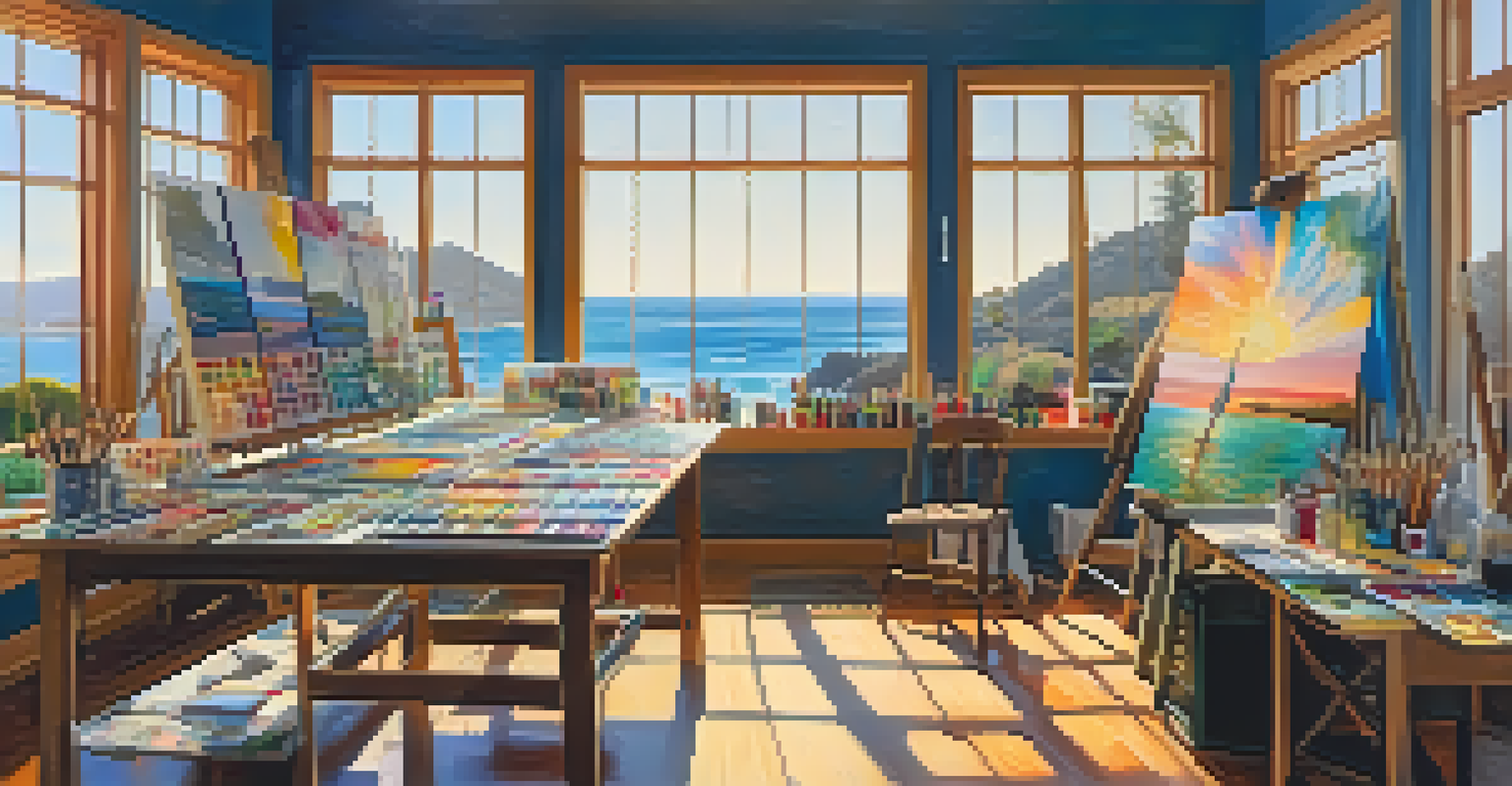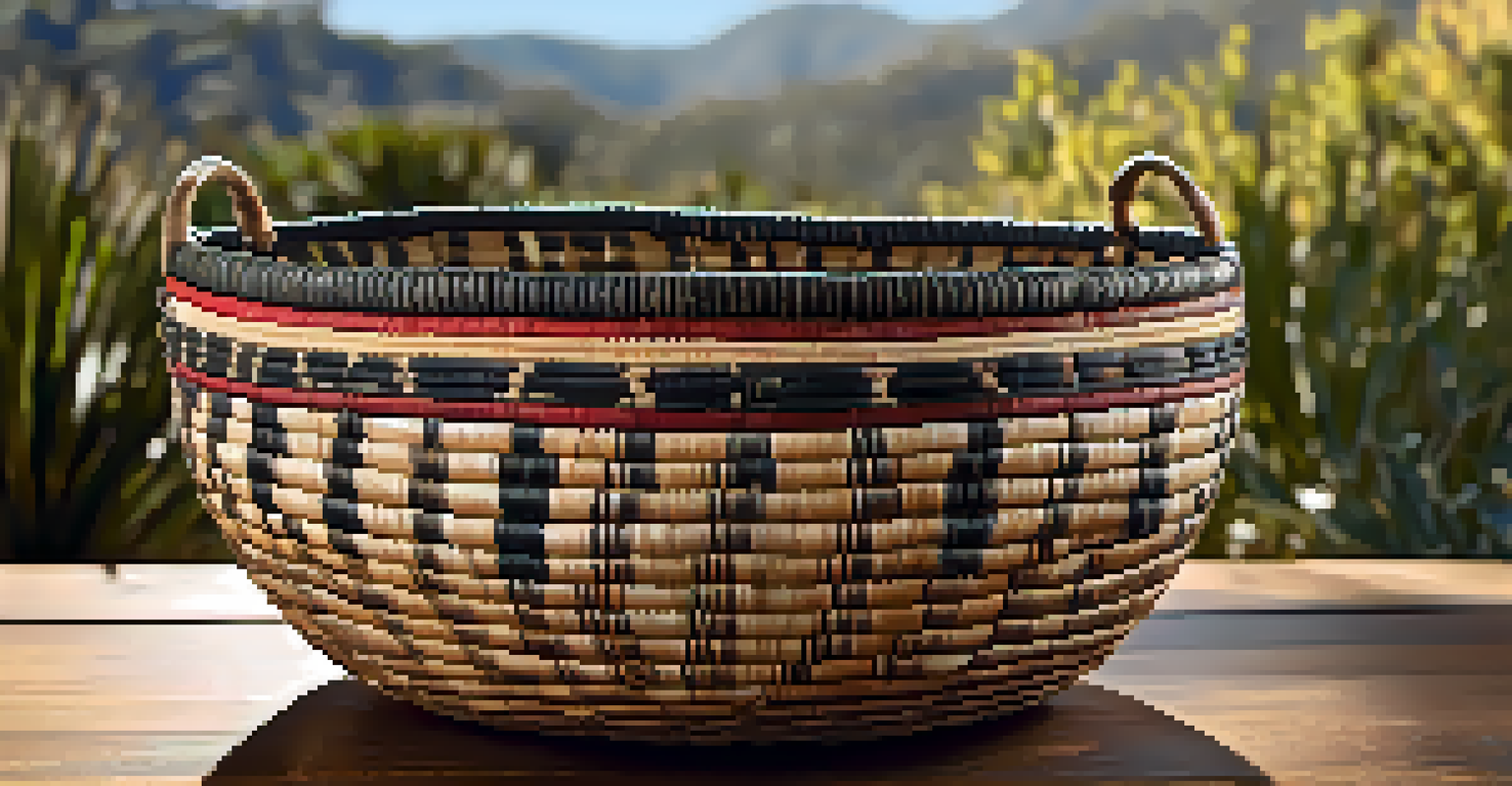The Evolution of Art in Santa Barbara: A Historical Perspective

The Indigenous Roots of Art in Santa Barbara
Long before European settlers arrived, the Chumash people inhabited the Santa Barbara region, creating a vibrant tapestry of art that reflected their culture and spirituality. Their intricate basket weaving, rock art, and pottery showcased both functional and aesthetic qualities, serving as vital expressions of their identity.
Art is the most beautiful of all lies.
The Chumash utilized natural materials to craft their artworks, often embedding symbolic meanings in their designs. For instance, their rock paintings, found in caves across the region, tell stories of their beliefs and daily life, connecting us to a time long gone.
This foundation of indigenous artistry paved the way for later artistic movements in Santa Barbara, highlighting the importance of cultural heritage in shaping the local art scene. Understanding these roots allows us to appreciate the ongoing influence of indigenous art in contemporary practices.
Spanish Colonization and its Artistic Influence
The arrival of Spanish colonizers in the 18th century marked a significant shift in Santa Barbara's art scene. The missionaries established the Santa Barbara Mission, which became a center for religious art, blending European styles with native traditions. This fusion resulted in unique religious artifacts that still capture the attention of art enthusiasts today.

Baroque influences were evident in the architecture and paintings commissioned during this period, reflecting both the grandeur of Spanish culture and the local adaptation of these styles. The mission’s stunning murals and sculptures serve as a testament to this cultural exchange.
Indigenous Art Shapes Local Culture
The Chumash people's art laid a foundational influence on Santa Barbara's cultural heritage and contemporary practices.
As the Spanish established their presence, they laid the groundwork for a diverse artistic legacy that would evolve over the centuries, intertwining indigenous and European influences. This period highlights how art can serve as a bridge between cultures, enriching the local narrative.
The 19th Century: A Flourishing of Artistic Expression
The 19th century ushered in a new era for Santa Barbara's art community, with an influx of artists drawn to the region's breathtaking landscapes. The picturesque scenery inspired many painters, leading to the establishment of an artist colony that fostered creativity and innovation.
Every artist dips his brush in his own soul, and paints his own nature into his pictures.
Prominent figures such as James F. McGowan and Frances D. Smith began to capture the essence of the California landscape, showcasing the interplay of light and color. Their works not only depicted the beauty of Santa Barbara but also contributed to the broader American Impressionist movement.
This period was marked by a vibrant exchange of ideas and techniques, as artists collaborated and experimented with new styles. The burgeoning art scene in Santa Barbara was a reflection of the evolving American identity, emphasizing the importance of the natural environment in artistic expression.
The Rise of Local Art Institutions in the 20th Century
As the 20th century approached, Santa Barbara saw the establishment of several art institutions, which played a crucial role in promoting local artists and their work. The Santa Barbara Museum of Art, founded in 1941, became a key player in the cultural landscape, showcasing both contemporary and historical art.
These institutions provided a platform for artists to exhibit their work, fostering a sense of community and collaboration. They also offered educational programs, encouraging budding artists and art lovers to engage with various forms of artistic expression.
Spanish Colonization Blends Styles
The arrival of Spanish colonizers introduced a fusion of European and indigenous artistic traditions, enriching Santa Barbara's art scene.
Through these efforts, Santa Barbara solidified its reputation as a hub for creativity, attracting artists from near and far. The growth of these institutions marked a turning point in the local art scene, emphasizing the importance of support and recognition in nurturing artistic talent.
Post-War Modernism and Its Impact on Santa Barbara Art
Following World War II, Santa Barbara experienced a wave of modernism that influenced artists and their work significantly. This period saw a shift towards abstraction and experimentation, as artists sought to break free from traditional forms and embrace new ideas.
Prominent local artists, such as Robert Motherwell and Richard Diebenkorn, emerged during this time, incorporating elements of modernist theory into their creations. Their work often explored themes of identity, perception, and the human condition, reflecting the complexities of post-war America.
The impact of modernism in Santa Barbara can still be felt today, as contemporary artists continue to draw inspiration from these foundational movements. This era exemplifies how art can evolve and adapt, responding to the changing social and cultural landscape.
Contemporary Art: A Reflection of Diversity and Innovation
Today, Santa Barbara's art scene is characterized by its diversity and innovation, showcasing a wide range of styles and mediums. From street art to digital installations, local artists are pushing boundaries and exploring new forms of expression, reflecting the complexity of modern life.
The annual Santa Barbara Arts and Crafts Show and other local festivals highlight this vibrant artistic community, providing opportunities for artists to connect with the public and share their work. These events celebrate not only established artists but also emerging talents, fostering a spirit of collaboration and creativity.
Modern Challenges for Local Artists
Despite its vibrant art community, rising living costs pose challenges for emerging artists, necessitating innovation and collaboration.
This contemporary landscape is a testament to the city’s rich artistic evolution, where the past informs the present, and diverse voices contribute to a dynamic cultural dialogue. It’s an exciting time for art in Santa Barbara, as the community continues to celebrate and embrace its artistic heritage.
Challenges and Opportunities in Santa Barbara's Art Scene
Despite its vibrant art community, Santa Barbara faces challenges that impact artists and their work. Rising living costs and limited funding can create barriers for emerging artists, making it difficult for them to thrive in an increasingly competitive environment.
However, these challenges also present opportunities for innovation and collaboration within the community. Local organizations and initiatives are working to address these issues by providing resources, support, and platforms for artists to showcase their work.

As Santa Barbara continues to navigate these complexities, the resilience and creativity of its artists will play a crucial role in shaping the future of the art scene. This ongoing dialogue about challenges and opportunities reflects the ever-evolving nature of art and its significance in our lives.